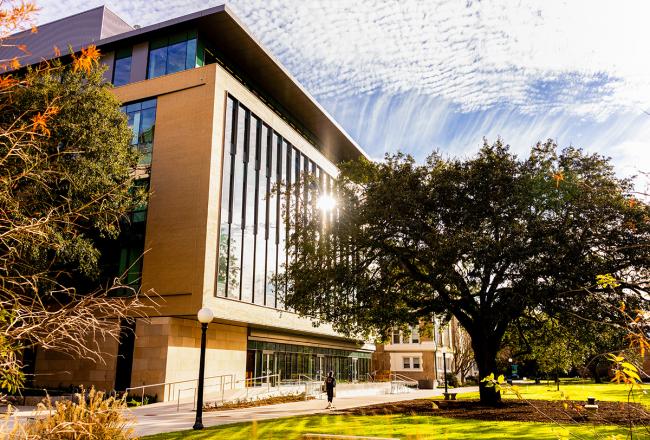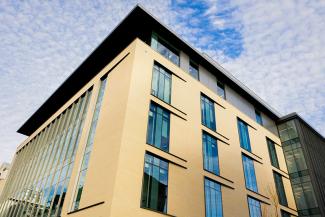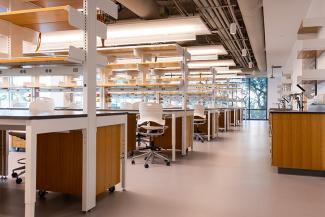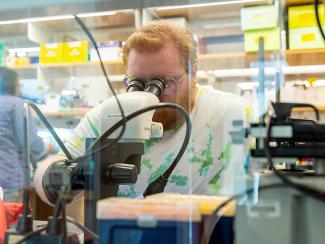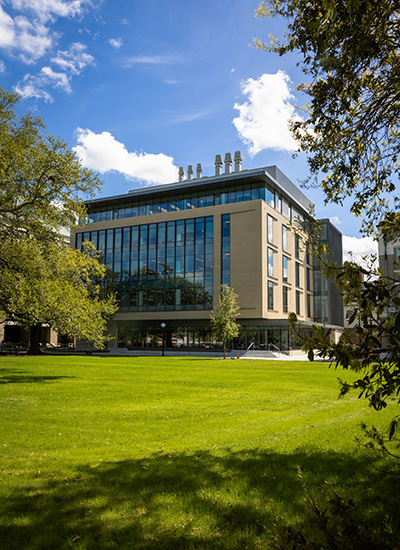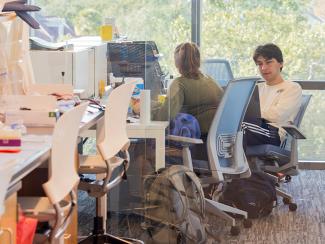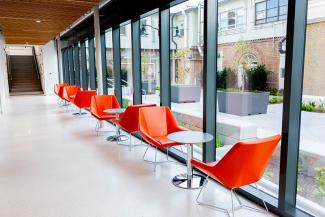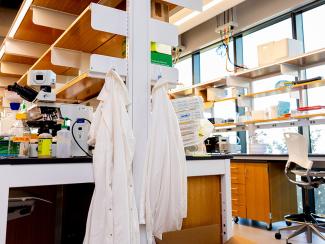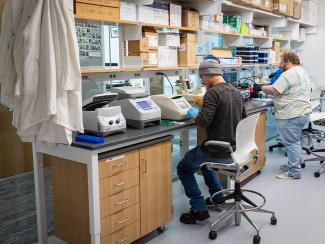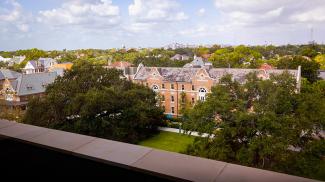Photos by Sabree Hill and Vincent Postle
In the midst of a cold snap in January 2024, the future of Tulane discovery — the Steven and Jann Paul Hall of Science and Engineering — came to life.
The new state-of-the-art building on Tulane’s uptown campus stands five stories tall and has 76,000 square feet of laboratories, classrooms and collaborative spaces for faculty, staff and students. It is located on the Academic Quad between Stanley Thomas Hall and Donna and Paul Flower Hall, at the heart of the uptown campus’s science district.
“Paul Hall is one of the most ambitious and significant expansions in Tulane’s history,” said President Michael A. Fitts. “It is a place where students, scientists and entrepreneurs will join together in pioneering research, in interdisciplinary learning and in making discoveries that can then be brought to the marketplace faster and improve lives worldwide.”
Construction on the building began in 2020 after a lead gift of $10 million from Tulane graduates Steven and Jann Paul. In making the gift, the couple said Tulane’s creative and curious science and engineering students deserve the best resources possible. Steven Paul is a graduate of the Tulane College of Arts and Sciences (’72) and the School of Medicine (’75). He is a physician-neuroscientist and entrepreneur whose career has spanned both academia and industry. Jann Paul is a graduate of the Tulane School of Social Work (’72).


